Do you have a question about the Orion StarSeeker and is the answer not in the manual?
Ensure all telescope parts are present and identify them.
Warning against looking at the Sun without a proper filter to prevent eye damage.
The main optical component that gathers and focuses light.
Reflects light to the eyepiece for comfortable viewing angles.
The part you look through; determines magnification with focal length.
A small telescope to help aim and locate objects in the night sky.
Connects telescope to tripod, allows up/down and left/right movement.
Aluminum legs supporting the telescope, extendable from 27" to 50".
A tray for holding extra eyepieces and small equipment.
The main optical component; an achromatic, fully coated 60mm lens.
Prevents dew and stray light from hitting the objective lens.
Allows fine adjustment of telescope in the altitude direction.
Where diagonal is inserted; adjusted by wheels to achieve focus.
Thumbscrews that secure the diagonal and eyepiece.
Knobs that secure the optical tube to the yoke mount.
Locks the telescope in the altitude and azimuth directions.
Secures legs to mount and locks them at desired length.
Bracket that holds the accessory tray.
Mentions the 10mm Kellner eyepiece and the dust cover.
Assemble the tripod, attach the mount, and connect the altitude control rod.
Mount the optical tube, finder scope, diagonal, and eyepiece.
How to move the telescope using altitude and azimuth axes.
How to focus the telescope using the focus wheels.
Tips for observing with eyeglasses, including eye relief.
How to focus the finder scope for clear viewing.
Steps to align the finder scope with the main telescope for accurate aiming.
Guidance on selecting ideal locations for astronomical observation.
Explains atmospheric seeing and transparency for image quality.
Discusses the impact of light pollution and how to mitigate it.
How to keep objects centered in the field of view as the Earth rotates.
Guidance on choosing eyepieces for different magnifications.
Discusses useful magnification limits for the telescope.
Details on observing the Moon, including optimal phases and filters.
Instructions for observing the Sun, emphasizing safety and solar filters.
Covers observation of planets, stars, and deep-sky objects.
How to use the telescope for long-distance terrestrial viewing.
Proper procedures for cleaning optical lenses and eyepieces.
Ensure all telescope parts are present and identify them.
Warning against looking at the Sun without a proper filter to prevent eye damage.
The main optical component that gathers and focuses light.
Reflects light to the eyepiece for comfortable viewing angles.
The part you look through; determines magnification with focal length.
A small telescope to help aim and locate objects in the night sky.
Connects telescope to tripod, allows up/down and left/right movement.
Aluminum legs supporting the telescope, extendable from 27" to 50".
A tray for holding extra eyepieces and small equipment.
The main optical component; an achromatic, fully coated 60mm lens.
Prevents dew and stray light from hitting the objective lens.
Allows fine adjustment of telescope in the altitude direction.
Where diagonal is inserted; adjusted by wheels to achieve focus.
Thumbscrews that secure the diagonal and eyepiece.
Knobs that secure the optical tube to the yoke mount.
Locks the telescope in the altitude and azimuth directions.
Secures legs to mount and locks them at desired length.
Bracket that holds the accessory tray.
Mentions the 10mm Kellner eyepiece and the dust cover.
Assemble the tripod, attach the mount, and connect the altitude control rod.
Mount the optical tube, finder scope, diagonal, and eyepiece.
How to move the telescope using altitude and azimuth axes.
How to focus the telescope using the focus wheels.
Tips for observing with eyeglasses, including eye relief.
How to focus the finder scope for clear viewing.
Steps to align the finder scope with the main telescope for accurate aiming.
Guidance on selecting ideal locations for astronomical observation.
Explains atmospheric seeing and transparency for image quality.
Discusses the impact of light pollution and how to mitigate it.
How to keep objects centered in the field of view as the Earth rotates.
Guidance on choosing eyepieces for different magnifications.
Discusses useful magnification limits for the telescope.
Details on observing the Moon, including optimal phases and filters.
Instructions for observing the Sun, emphasizing safety and solar filters.
Covers observation of planets, stars, and deep-sky objects.
How to use the telescope for long-distance terrestrial viewing.
Proper procedures for cleaning optical lenses and eyepieces.
| objective lens diameter | 60 mm |
|---|---|
| focal length | 700 mm |
| focal ratio | f/11.6 |
| magnification with 25mm eyepiece | 28x |
| magnification with 10mm eyepiece | 70x |
| optical tube material | Aluminum |
|---|---|
| weight | 5.7 lbs |
| tripod material | Aluminum |


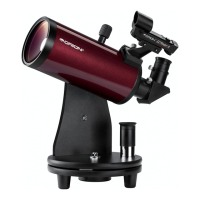
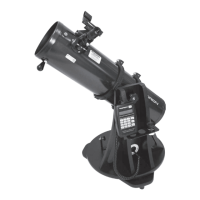
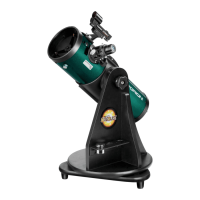
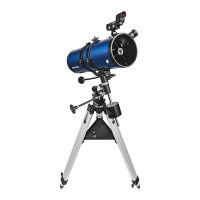

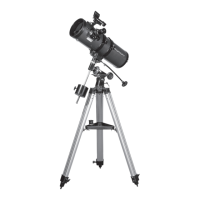
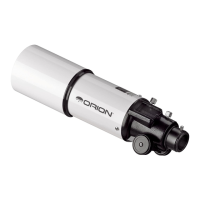
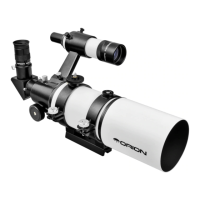

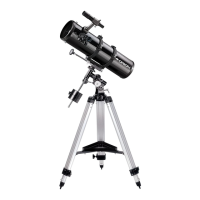
